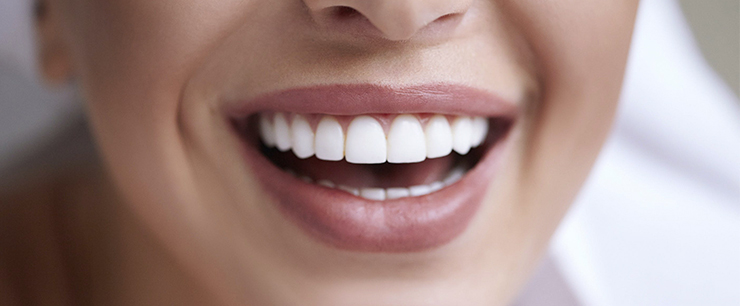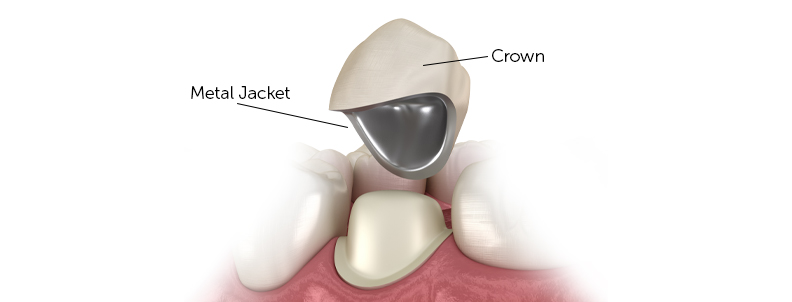PFM or Porcelain Crown is a hybrid of porcelain and metal crown. The complete crown has a metal layer underneath with porcelain on top. The framework is made of metal and it is thin, sturdy, and fits perfectly on the prepared teeth. For such crowns, a substantial part of the tooth structure gets removed when the tooth is prepared to make space for porcelain and metal. Despite the fact that the porcelain layer is very tough and can withstand the force of chewing well, its strength is not high when compared to zirconium or glass ceramic and it is possible for it to break or chip from the tooth.
Porcelain Crown Usage
This type of crown is really best suited for the back teeth, as in the case of receding gums, as the metal underneath distinctively starts showing. Also, keep in mind in the long run porcelain tends to wear out the opposing teeth. There is also an increased chance of gingivitis. The signs of gingivitis are inflammation of the gums, redness, pain, swelling, and bleeding of the gums.

Porcelain Crown Benefits
- The metal underneath makes the crown stronger and more stable.
- The metal reinforces the bonding to the tooth
- Porcelain comes in a variety of shades to choose from making it easily blend in with your other teeth.
- If night grinding is a problem or bridges are required in the long run then PFM crowns are the favored choice.

Porcelain Crown Step-By-Step Procedure
1st Appointment
- Consultation, evaluation of the X-Ray, and clinical examination to match the shade of the crown with your natural teeth.
- Administration of local anesthetic
- Prepare the tooth by cutting out a small amount of the tooth structure
- Take an impression of your tooth using an intra-oral camera of conventional mould filled with dental paste that you will be asked to bite into. Your tooth impression will be sent to the dental laboratory where your crown will be made.
- A temporary crown will be placed until your permanent crown is ready for fitting. Refrain from eating sticky or hard food until your final fitting appointment. Also, it is best to avoid chewing from that side.
2nd Appointment
- At this appointment, the fitting will be checked in terms of bite, size, shape, and colour. If all is in order and the results are satisfactory, in some cases, at this 2nd appointment the crown can be polished and cemented
3rd Appointment
- At this appointment final adjustment, polishing, and permanent fitting of the crown is done. If needed an extra one or two appointments may be arranged to perfect the fitting.

Frequently Asked Questions
My teeth feel fine. Do I still need to see a dentist?
Your teeth may feel fine, but it’s still important to see the dentist regularly because problems can exist without you knowing. Your smile’s appearance is important, and your dentist can help keep your smile healthy and looking beautiful. With so many advances in dentistry, you no longer have to settle for stained, chipped, missing, or misshapen teeth. Today’s dentists offer many treatment choices that can help you smile with confidence, including:
- Professional teeth whitening
- Fillings that mimic the appearance of natural teeth
- Tooth replacement and full smile makeovers
Why is visiting the dentist so important?
Visiting the dentist regularly will not only help keep your teeth and mouth healthy but will also help keep the rest of your body healthy. Dental care is important because it:
- Helps prevent tooth decay
- Protects against periodontal (gum) disease, which can lead to tooth and bone loss
- Prevents bad breath – brushing, flossing, and seeing the dentist regularly will help reduce the number of bacteria in your mouth that causes bad breath
- Gives you a more attractive smile and increases your self-confidence
- Helps keep teeth looking bright by preventing them from becoming stained by food, drinks, and tobacco
- Strengthens your teeth so that you can enjoy healthy, beautiful smiles for the rest of your life!
TAKE ADVANTAGE OF DENTAL SAVINGS IN 5 SIMPLE STEPS
Complete The Enquiry Form Below
Fields marked * are compulsory
[wpforms id=”797″]

